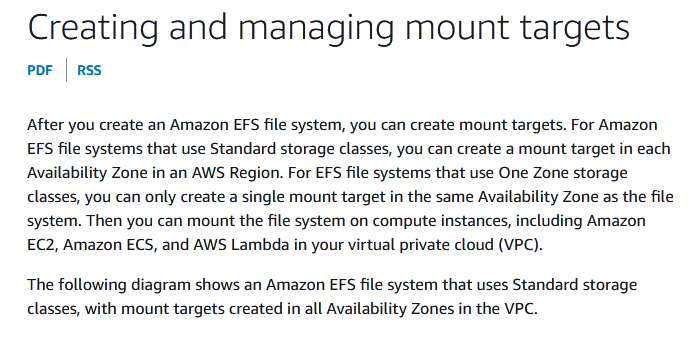A company uses AWS Organizations to manage multiple AWS accounts. The company’s SysOps team has been using a manual process to create and manage IAM roles. The team requires an automated solution to create and manage the necessary IAM roles for multiple AWS accounts.
What is the MOST operationally efficient solution that meets these requirements?
D
A SysOps administrator needs to configure automatic rotation for Amazon RDS database credentials. The credentials must rotate every 30 days. The solution must integrate with Amazon RDS.
Which solution will meet these requirements with the LEAST operational overhead?
B
A company’s SysOps administrator attempts to restore an Amazon Elastic Block Store (Amazon EBS) snapshot. However, the snapshot is missing because another system administrator accidentally deleted the snapshot. The company needs the ability to recover snapshots for a specified period of time after snapshots are deleted.
Which solution will provide this functionality?
C
A SysOps administrator recently configured Amazon S3 Cross-Region Replication on an S3 bucket.
Which of the following does this feature replicate to the destination S3 bucket by default?
D
A company has a workload that is sending log data to Amazon CloudWatch Logs. One of the fields includes a measure of application latency. A SysOps administrator needs to monitor the p90 statistic of this field over time.
What should the SysOps administrator do to meet this requirement?
B
A SysOps administrator is provisioning an Amazon Elastic File System (Amazon EFS) file system to provide shared storage across multiple Amazon EC2 instances. The instances all exist in the same VPC across multiple Availability Zones. There are two instances in each Availability Zone. The SysOps administrator must make the file system accessible to each instance with the lowest possible latency.
Which solution will meet these requirements?
D
Reference:
https://docs.aws.amazon.com/efs/latest/ug/accessing-fs.html
A SysOps administrator has successfully deployed a VPC with an AWS CloudFormation template. The SysOps administrator wants to deploy the same template across multiple accounts that are managed through AWS Organizations.
Which solution will meet this requirement with the LEAST operational overhead?
D
Reference:
https://aws.amazon.com/blogs/aws/new-use-aws-cloudformation-stacksets-for-multiple-accounts-in-an-aws-organization/
A company is running distributed computing software to manage a fleet of 20 Amazon EC2 instances for calculations. The fleet includes 2 control nodes and 18 task nodes to run the calculations. Control nodes can automatically start the task nodes.
Currently, all the nodes run on demand. The control nodes must be available 24 hours a day, 7 days a week. The task nodes run for 4 hours each day. A SysOps administrator needs to optimize the cost of this solution.
Which combination of actions will meet these requirements? (Choose two.)
CE
A company is supposed to receive a data file every hour in an Amazon S3 bucket. An S3 event notification invokes an AWS Lambda function each time a file arrives. The function processes the data for use by an application.
The application team notices that sometimes the file does not arrive. The application team wants to receive a notification whenever the file does not arrive.
What is the MOST operationally efficient solution that meets these requirements?
C
A company recently acquired another corporation and all of that corporation's AWS accounts. A financial analyst needs the cost data from these accounts. A
SysOps administrator uses Cost Explorer to generate cost and usage reports. The SysOps administrator notices that "No Tagkey" represents 20% of the monthly cost.
What should the SysOps administrator do to tag the "No Tagkey" resources?
D